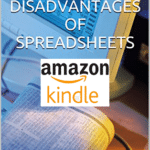Over the years, the capabilities of IT systems have certainly grown by leaps and bounds. But so have the risks that accompany them. Countless threats to IT systems now exist that are capable of seriously disrupting business operations. That’s why companies have to conduct assessments aimed at making sure their systems are still capable of functioning effectively, efficiently, and securely all the time.
If you think you’ve been lucky enough to be spared from these threats, then maybe it’s because you haven’t conducted a risk assessment on your IT system recently. All too often, we hear of CIOs who believed their IT system was in tip-top condition, only to be later caught off-guard by a critical system breakdown that would eventually cripple their business for days or weeks.
More information assets to look after
If, before, you only had to worry about regular office applications, workstations, a LAN and a server, today’s varied and more sophisticated information assets are more challenging to maintain.
In addition to network operating systems, database management systems, content management systems, email systems, virtualization platforms, document management systems, business intelligence applications, and accounting software, a typical enterprise may also have to look after firewalls, intrusion detection systems, storage and backup systems, and data loss prevention systems, to mention a few.
These understandably require the services of experts spanning a wide range of skill sets.
Rising threats to corporate identity and privacy
Individuals are no longer just the ones being preyed upon by identity thieves. Businesses can now be subject to corporate identity theft as well. You could wake up one day finding your business already accused of carrying out illegal activities, a big chunk of your money gone, and your directors? seats already occupied by complete strangers.
To make things worse, corporate threats aren’t just coming from the outside.
Threats to corporate privacy, for instance, can come from within the organisation itself. Sensitive information like trade secrets and financial data are often leaked out (purposely or inadvertently) by employees. This is largely caused by the ever growing number of options for communications and transferring data (e.g. emails, instant messaging, blogs, social networking sites, ftp, P2P, etc.).
Greater challenges in designing, developing, and implementing policies and programs
Laws and regulations like SOX and Solvency II, which have direct impacts on IT, are on the rise. That is why corporate policies and programs now require sweeping changes. You now have to be more deliberate in integrating IT when establishing governance, internal controls, change management, incident management, and performance management.
A solid understanding on widely accepted frameworks and good practices like COBIT, COSO, and CMMI will help you considerably in such undertakings. Using these frameworks as guidelines will not only help you keep your policies and programs attuned to the times, they will also keep you in compliance with regulations.
Increasing demand for disaster recovery and business continuity capabilities
Every time you have a down time, you increase the probability of losing your customers to competitors. The longer the down time, the greater that probability becomes. Therefore, when a major disruption strikes, you should be able to recover at the soonest. If possible, you should be able to deliver products and services as usual.
This of course requires spending to increase your disaster recovery (DR) and business continuity (BC) capabilities. Are you ready for it? Migrating your IT infrastructure from traditional systems to the latest technologies that are better equipped for BC/DR requires careful planning and implementation to ensure an optimal return on investment.
Contact Us
- (+353)(0)1-443-3807 – IRL
- (+44)(0)20-7193-9751 – UK




